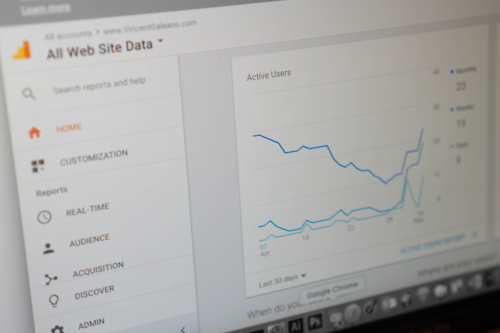
Why Is My Website Bounce Rate So High?
The bounce rate is the percentage of visitors who leave your website after only visiting one page. A high bounce rate can be frustrating for both you and your website visitors. The good thing is that there are a few things you can do to reduce it.
Here are the tips that will help you decrease the bounce rate on your website:
1) Make sure that all pages load quickly
We should make sure that all pages load quickly by optimising images and scripts, removing unnecessary plugins, and using caching plugins.
The internet is an ever-changing place, and that’s why we need to be constantly on our toes. Websites are getting increasingly more complicated, which can slow down the page loading process. We can optimise images and scripts, remove unnecessary plugins, and use caching plugins in order to make sure that all pages load quickly. Optimising Images and ScriptsImages and scripts can be very heavy on the page, slowing down loading times. We should minimise these things to make sure our site is as light as possible.
There are a variety of plugins available to help us do this– some are built into browsers, others are third-party plugins.
The plugin we’ll use is called “Nitropack”. Once installed and activated, the plugin will make a few small changes to your site automatically, such as optimising images, minifying scripts and caching files. This will allow your website to load quicker with minimal to no manual input.
2) Use headings and bullet points to break up content
It is important to have a clear purpose for every page. This is why headlines, subheads, bulleted lists, and headings are all important. Headlines are the most important as they should be able to summarise the content on the page. The headline can also be used as a subhead if it needs to be broken up into two lines. Subheads can also be used to break up a long paragraph into smaller sections for easier reading. Bulleted lists are great for visually breaking up text and headings allow readers to quickly scan through the page for what’s most relevant to them.
A good headline should:
- Summarise the content on a page
- Can be used as a subheading to break up sections of content
- Should not be longer than one short sentence
3) Create an engaging user experience
With the advent of technology, the way we interact with content has changed. We are no longer limited to just reading what is on the page. We can now do more than that – we can click on links, play videos, and scroll through images.
Interactive elements have been used in websites for a long time now. They are one of the most important aspects of UX design because they help engage users and make a website more interactive. Examples of interactive elements you should use on your website include:
- Interactive and engaging animations
- Videos that grabs the visitor’s attention
4) Use social media buttons to build a community around your brand
The use of social media buttons is a new trend for landing pages. They are a useful way of building a community around your brand. It enables you to connect with your audience and provide an easy way for people to share your content on social media.
Since social media is so influential, it enables people to share your content with their friends and connect with you on a personal level. With the popularity of social media, more businesses are turning to landing pages as a way to receive more views from their target market.
The use of social media buttons on landing pages has been shown to increase conversion rates by 14%. This is because people like to share things that they find interesting or helpful for others.
Another point to remember is the most powerful referral source: word of mouth. In this case, people sharing your content on social media will instantly give your brand credibility amongst that user’s social group.
Conclusion: Why you should optimise for low bounce rates.
Web pages can be anything from a simple landing page to a complex e-commerce store. Regardless of the type of website, it is important to keep in mind that its main objective is to convert visitors into customers. It is therefore crucial for website owners to optimise their web pages for low bounce rates.
The average bounce rate of webpages is between 40% and 50%. This means that 40% to 50% of visitors only visit one page on the site before leaving. The higher the bounce rate, the lower the conversion rate will be. This means that you need to focus on optimising your content for low bounce rates in order to increase your conversion rates and ultimately your business revenue.
Sometimes, the answer to reducing your website bounce rate isn’t clear and you may require professional help. At Blue Whale Media, our web design agency in Liverpool have experience in creating websites for better conversion rates and lower bounce rates. If this is something you need help with, feel free to contact us!





